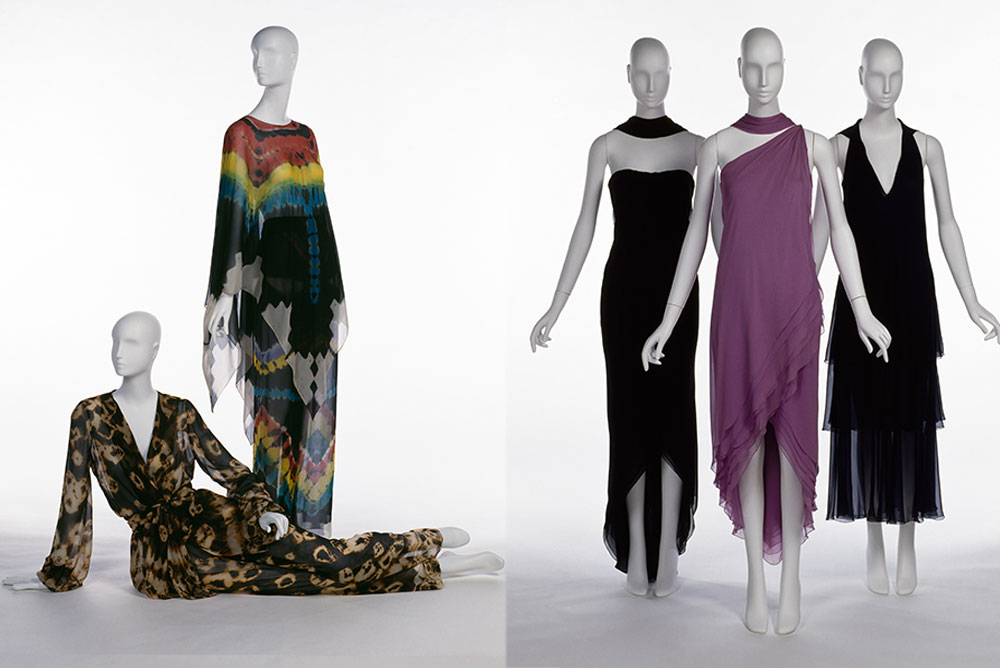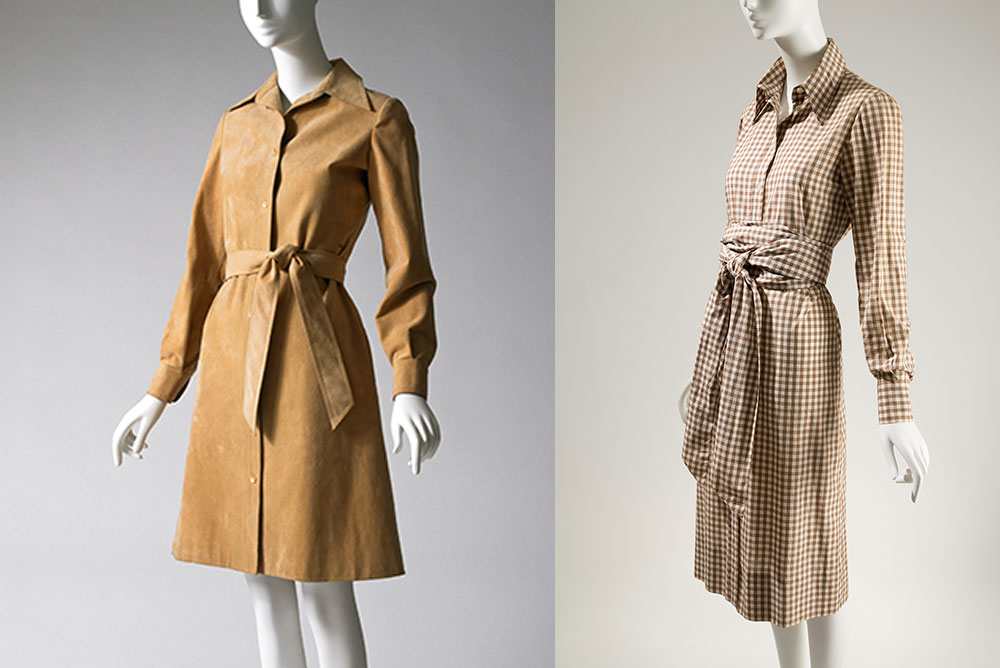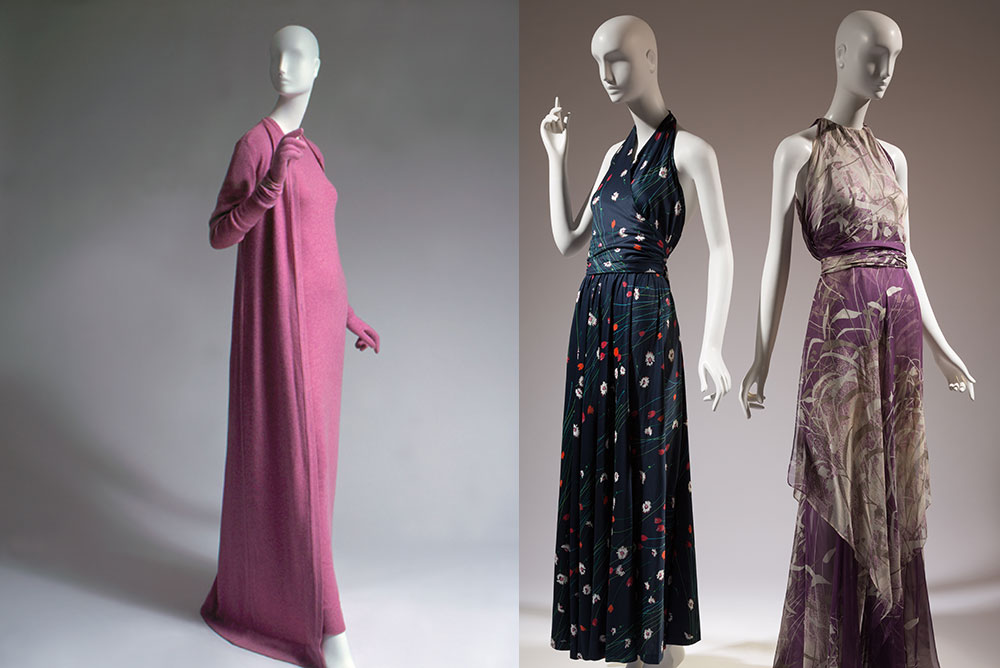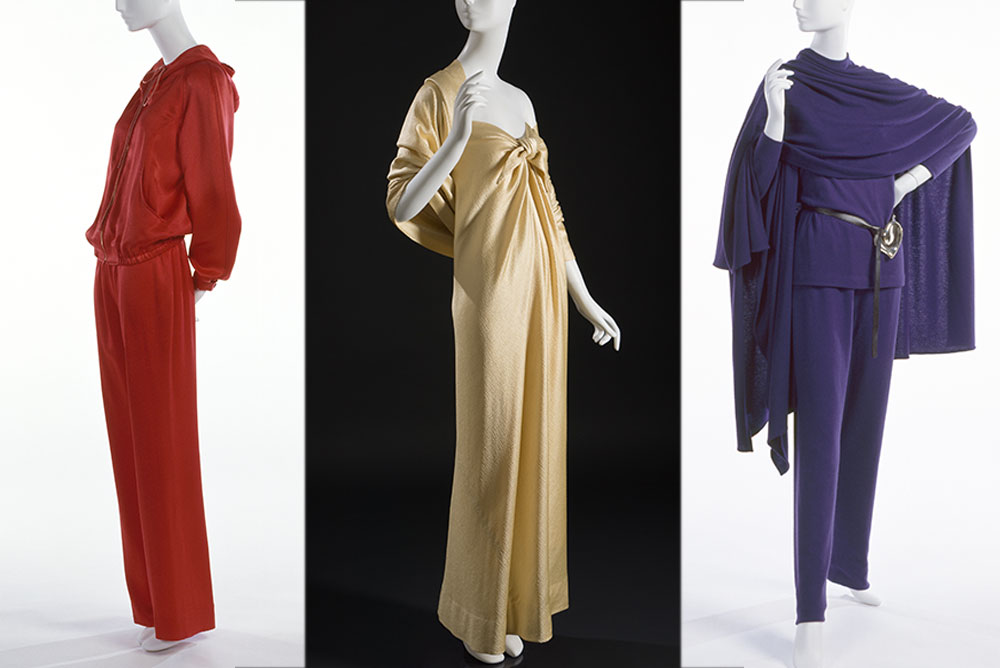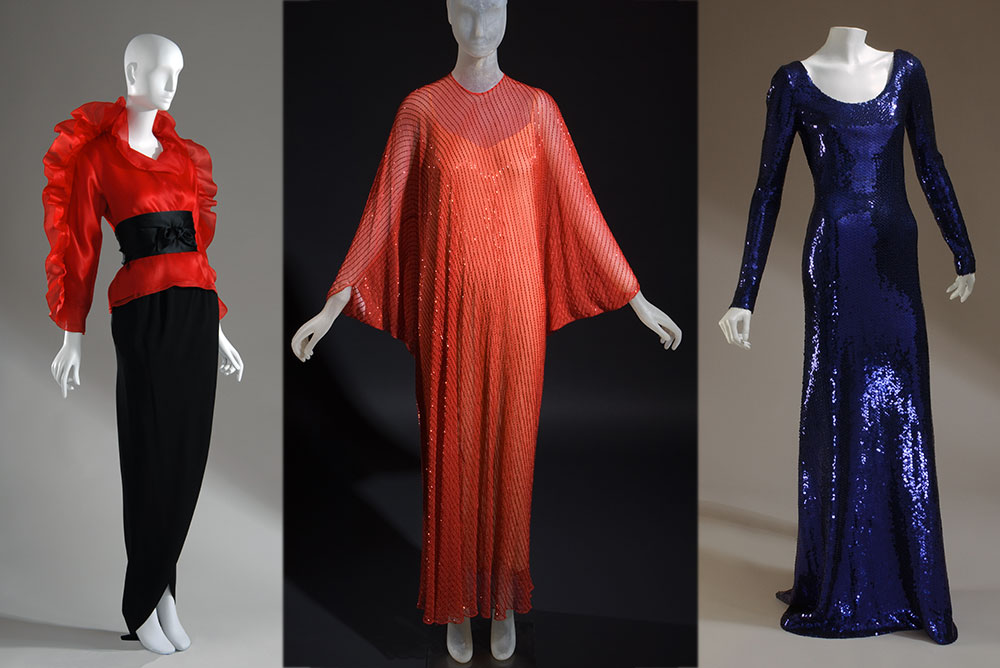The Genius of Halston
All photos courtesy of The Museum at FIT.
THE NEW Netflix series “Halston” takes us back to the ’70s and some of the fascinating people who dominated the era, including Liza Minnelli, Elsa Peretti, Eleanor Lambert and of course, the designer himself.
Seeing the series left us wanting to dig deeper into the story. We asked Patricia Mears, deputy director of The Museum at FIT and organizer of the 2015 exhibit, “Yves Saint Laurent + Halston: Fashioning the 70s,” about how Halston exemplified this time in fashion history.
MLB: What do you think accounts for the renewal of interest in Halston— the TV series and the documentary in 2019? He was a superstar in the late ‘70s and early ‘80s, but I think since then, forgotten.
PM: The show focuses on the sensational parts of his career, but that’s only part of the story—the one that makes good TV with a lot of sexy, beautiful people.
MLB: How do you see him?
PM: His is the classic American story. He’s a milliner who works within a rigid structure and then makes a quantum leap into fluid clothing. He makes a lot of money and then loses it all—it’s a rags-to-riches tale and then back again. He dies of AIDS far away from New York and the fashion industry.
MLB: Talk a little about the ‘70s and fashion.
PM: It was a time of big changes—in the more relaxed look of clothes and how they were designed, distributed and consumed. In between the hippie 1960s and the heady 1980s, the decade led to the beginning of designer-led conglomerates and the rise of celebrity culture.
MLB: What was he most famous for?
PM: He was ahead of his time, a pioneer in creating the concept of a huge conglomerate. He became famous for being famous. Halston created a spare but luxurious set of pieces that became the foundation of his daytime designs for women. They were similar to Halston’s daily uniform of a cashmere turtleneck, matching cardigan or loosely cut jacket and a pair of trim trousers. His most famous garment, the shirtwaist dress, was an adaptation of a man’s shirt. Made of Ultrasuede, a machine-washable fabric, the dress was subtle and sexy, with buttons that began at the breastbone rather than the neckline. It became a fashion staple.
MLB: Which designers had the most influence on the work of Halston?
PM: The sinuous, bias-cut gowns of Madeleine Vionnet from the 1930s inspired him as did influences from the 1940s, including the cashmere sweater sets of Mainbocher and the ties and closures used by Claire McCardell.
MLB: Why is he considered such a formidable designer?
PM: He had an amazing eye and brilliant sense of proportion. He was extremely focused. In fact, he was a workaholic throughout his career. He didn’t live the heady, drug-infused lifestyle until he was middle-aged in the late 70s and 80s, when the demands of the business were extremely stressful. He didn’t have a huge range of design; it was narrow but profound. He liked to take one idea and keep working on it. His designs were simple, but a lot of thought went into details, such as how tight an armhole should be.
MLB: You organized a show comparing Yves Saint Laurent and Halston. How do they compare?
PM: Halston’s designs stand the test of time. They’re visually pared down—he didn’t use buttons or zippers; Saint Laurent used interior corsets. There’s a seamlessness to Halston’s clothes; they caress the body and have movement.
MLB: Is his influence still being felt today?
PM: When Tom Ford went to Gucci in the 90s, his first collections were inspired by Halston—pure and distilled yet sexy at the same time. Ralph Rucci also pays homage, along with many others who have adopted his aesthetic without even realizing it.
MLB: Does the TV series on Halston have some benefit?
PM: Yes, people will learn about a great American designer.
—My Little Bird Staff
In conjunction with the release of “Halston” on Netflix, Halston’s chief creative officer Robert Rodriguez is designing a custom 10-piece collection based on the key looks from the show. The capsule will be available at Neiman Marcus, Saks and through the website. Pre-orders will start the week of June 7.
